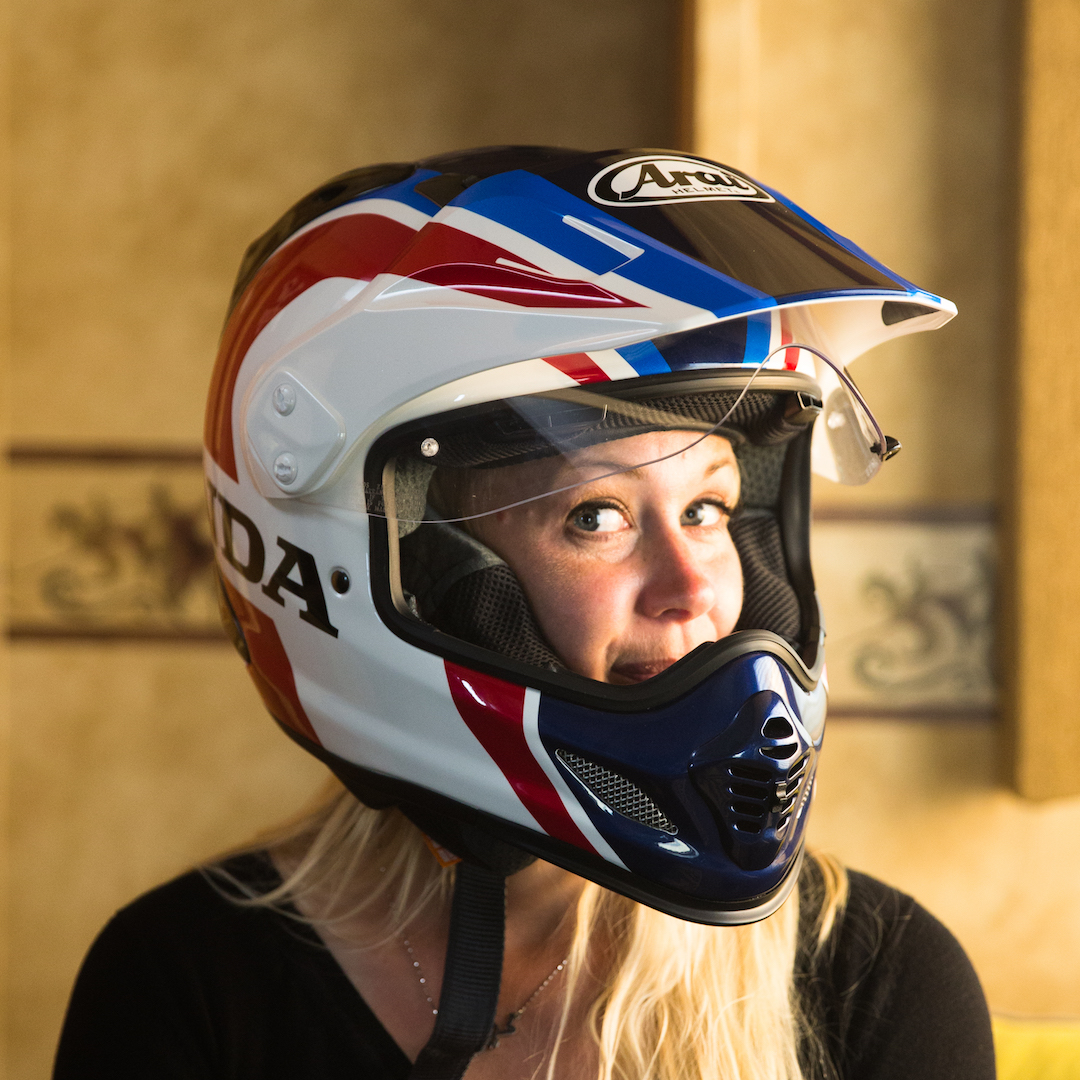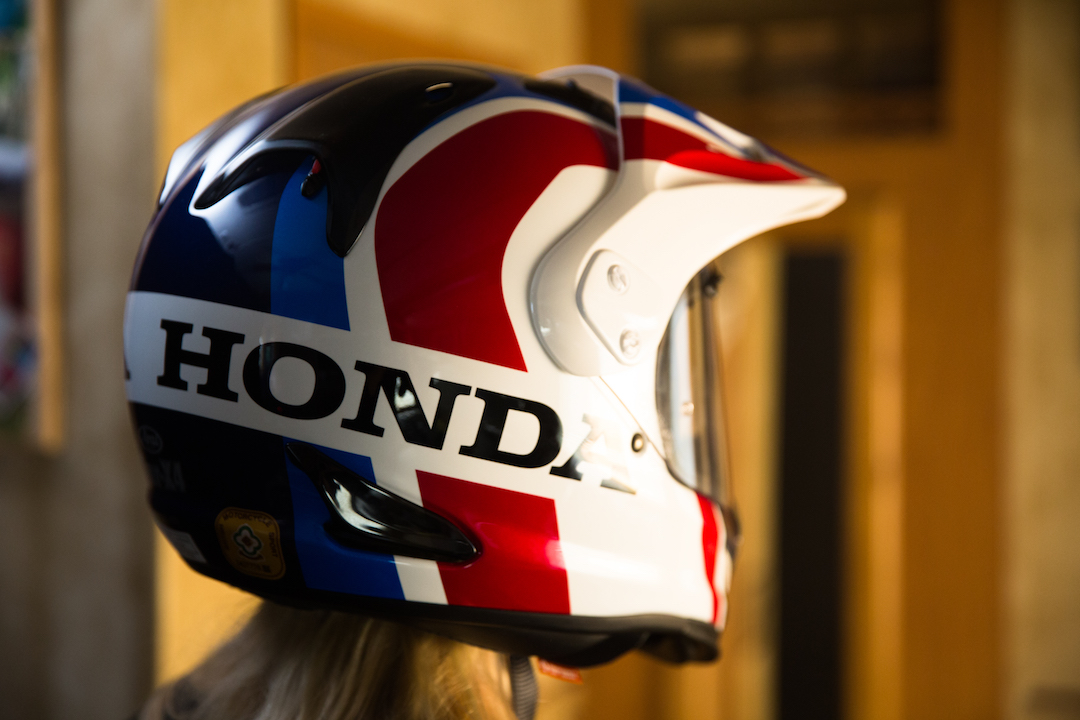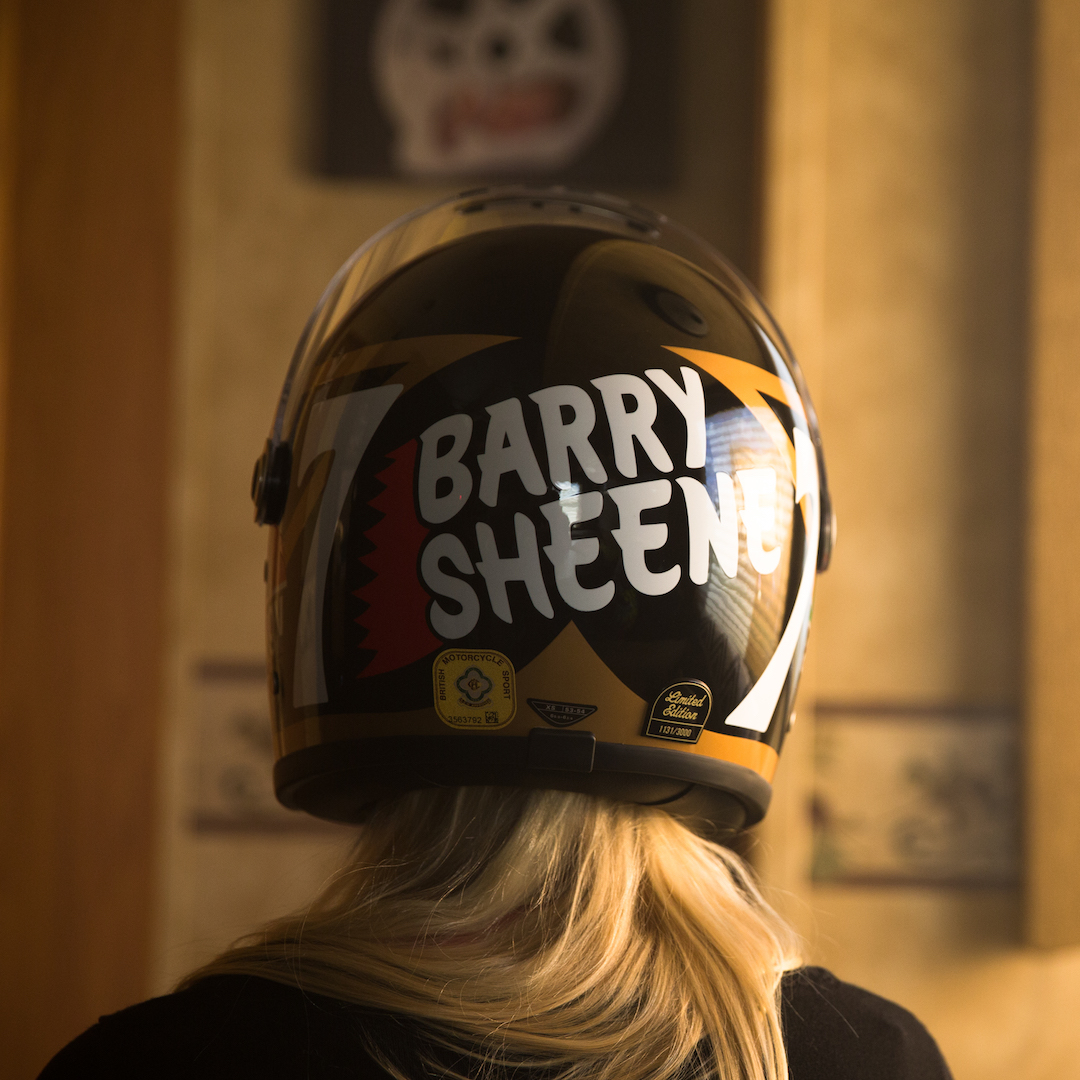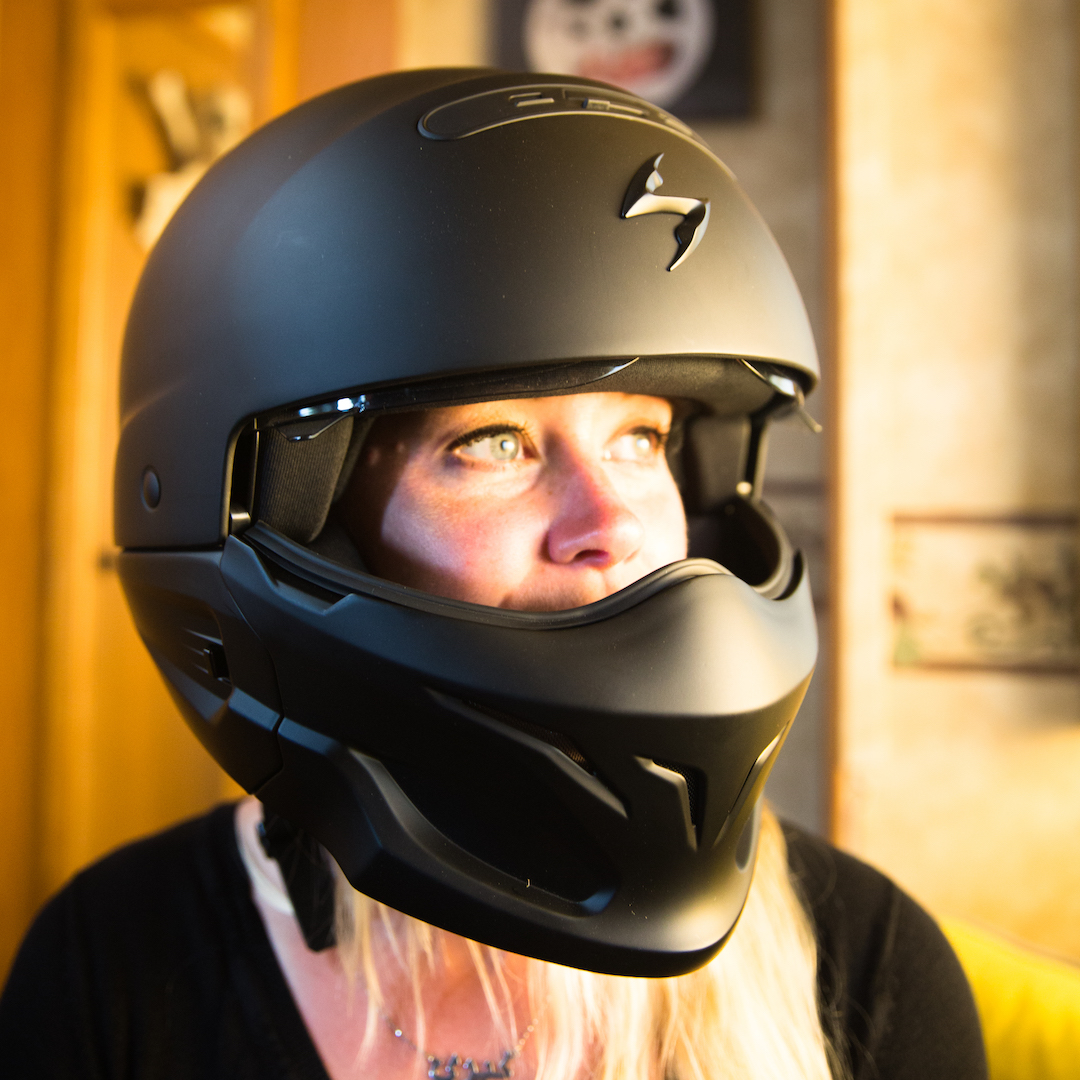" We've been following the progress of Scott Teopfer's pet project since the early times. We had a sense that it just might encapsulate something beautiful about motorcycling. And we were right. The finished version of the film is lovely. It "
The Lid: Style and Substance
What better way to look at helmets than a Wall of Death
Bike culture has rebel roots. But in most corners of the planet, you have to wear a lid by law. It’s a no-brainer, really. Unless you intend to be a no brainer.
All you need to ride a motorcycle is the machine itself, so it’s natural that this one lump of material bike culture that riders of every creed must own has been commercially supercharged.
There is a dizzying range of stuff out there to buy. Every conceivable combination of materials has been brought to bear on the design of a helmet. Composite technologies have sought to retain the safety elements while making lids lighter, more durable, more slippery in the wind and crucially — more attractive.

And here’s the thing. While considerations of safety, practicality, comfort and economy are important in the consumer choices you make, technologies focussed on making your helmet lighter, more ventilated, more aerodynamic and practical will ultimately be subsumed into one overarching consideration: style.
In this age of one-click shopping, what is most likely to make you click the basket icon is what these things look like. Lids are signifiers. The choices you make speak volumes about the way you see yourself, the world and your situation within the biker tribe.

To demonstrate what we mean, we decided to take a few of our favourite lids to the most abstract biking context. This carnival slice of board racing bike heritage has, ironically, hardly ever seen the use of a lid. Riding a tight radius Wall of Death may be damaging to life and limb, but wearing a helmet is a little bit redundant.
It takes a certain sort of nutter to ride a vertical wall with style and panache — or even maintain enough momentum to perform at all. Much respect.

If you’re the type of motorcyclist who likes to show their chiselled profile to the world, and who doesn’t plan on hitting the handlebars or assorted other hard obstacles to front and centre, then the open face lid is the only option. This beauty from AGV is the X70 Pasolini. Designed to evoke the chaotic, swaggering style of racer Renzo Pasolini, who was so popular in the nineteen sixties and seventies.

At an opposing end of the aesthetic scale is Arai’s stunning stripe and tech homage to Honda’s totemic Africa Twin adventure racer. The Tour X4 Honda Twin Africa not only evokes the composite lightweight tech of the bike itself, it matches perfectly the hi-impact Dakar-like design.

Going back to the 1970s we pay homage to everyone’s favourite cheeky racing chappy. AGV’s X3000 Barry Sheene features the classic seventies minimal full face design, and also Barry’s ever-present rubber ducky, the lucky number seven and the man’s signature on the back. Let’s hope it doesn’t draw Barry’s fabled steel reinforcement into the frame.

The K3 SV Misano is by comparison a colourful slice of contemporary tech and design. Originally released in 2014 it set a benchmark for an affordable hi-tech design, utilising all the material science available as well as wind-tunnel trickery to make this design colourful, lightweight and comfortable. It looks cool, too of course.

For that special forces, urban guerrilla look that puts the fear of god into the Uber drivers of our city streets then the Scorpion EXO-Combat fits the bill. From the matt black finish to the militaristic nomenclature it’ll give you that edge of darkness as you cut a mean, incognito swathe through the concrete jungle. If you’re in a lighter, less combative mood then you can remove the dark visor and chin bar for an open face ride.

CLICK TO ENLARGE










